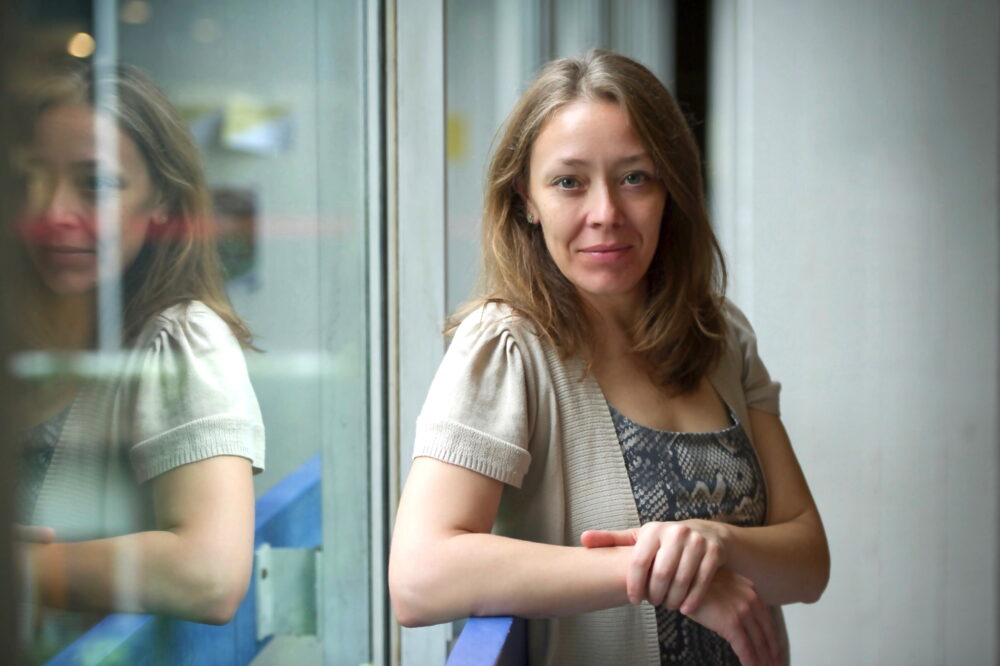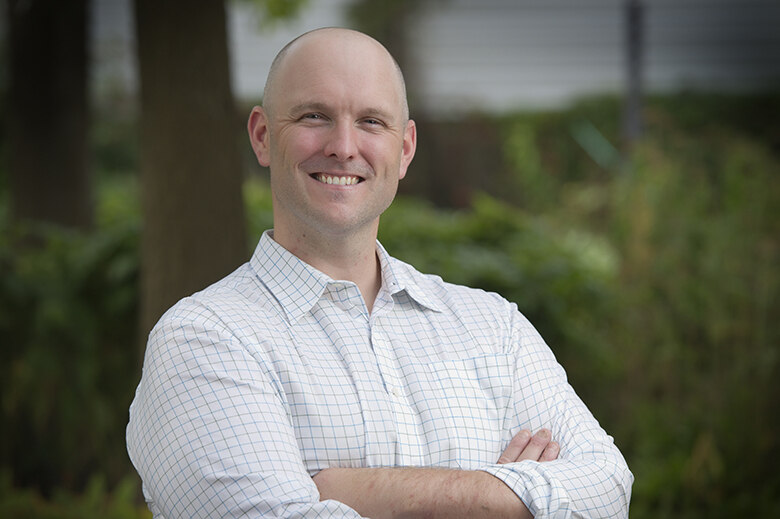This year’s Earth Day theme, “Planet vs. Plastics,” names an ongoing battle that pits people against the plastics we use. Who is winning?
Let’s consider our “opponent” – plastics. For one, the synthetic material takes anywhere from 20 to 500 years to decompose. It brings us waste-clogged oceans, animals deformed by six-pack rings and bird stomachs filled with garbage. Microplastics are likely in our blood right now, perhaps even able to cross the barriers into our brains.
Earth Day calls for a 60 percent reduction by 2040 in plastic production – currently at more than 380 million tonnes per year.
Does our side, “team planet,” have any hope?
Many University of Guelph researchers think so, cautiously. From the College of Arts to the Ontario Agricultural College, their reflections have a striking unity: Plastics are not our mortal enemies, but we must critically engage with how we use them and how we can realistically move forward.
Here are just a few lessons U of G plastic researchers want you to walk away with this year on Earth Day.

“Solutions require imagination and creative action.”
– Dr. Amanda Boetzkes
Art history professor Dr. Amanda Boetzkes, author of Plastic Capitalism: Contemporary Art and the Drive to Waste, brings together art and the life sciences, and what these fields reveal about our global systems of energy.
As Boetzkes questions: What can artworks teach us about the waste we use? How do they complicate and uncover our current discourses and messaging that we too often take as “common sense”?
For instance, is the climate crisis really a “new” emergency? Her recent essay challenges that framing. As she writes, this discourse of the climate crisis as “a sudden awakening to ecological catastrophe and the precarity of Indigenous territories and Peoples [denies] any understanding of the political disputes over Indigenous land that have been ongoing for centuries and that are still not resolved.”
In a similar vein, she confronts the theme “Planet vs. Plastics” itself and calls each of us to imagine new creative solutions:
“I can’t think of a more timely theme for Earth Day. Nevertheless, the framing of the environmental problem of plastics in terms of an epic fight across a binary opposition risks obscuring the real condition of the planet.
Plastics have co-evolved with the Earth’s ecosystems over the 20th and 21st centuries; they are now an integral part of the planet, appearing in waterways, land and atmosphere, from micro to macro scales. Their effects span from genetic and biochemical disruptions in animals to their more cumbersome appearance as tangled agglomerations of waste.
Solutions require imagination and creative action. They require imagination because plastic pollutions are so intensive that we cannot defect to mythologies of a planet before plastics; we must have a vision of a planet that takes into account the ongoing material effects of plastics into the future. Creative action must consider how we can shift from the historical consciousness that produced plastics in the first place and take hold of plasticity itself in a fundamental sense.
Vision and mindset are essential tools to recast the original problem of plastics.”
“The amount of microplastics will only continue to grow.”
– Dr. Ryan Prosser

A professor of ecotoxicology in the School of Environmental Sciences, Dr. Ryan Prosser questions what happens when chemicals such as road salt, pesticides and microplastics leak into the environment.
As all biological levels of organization are interconnected, every part is affected by our actions – from an individual organism to entire biological communities.
This couldn’t be truer for microplastics. Over the years, Prosser has studied both their potential effects and where they tend to accumulate. The worry is that enough microplastics can affect one organism’s health and therefore their reproduction, cascading into broader and unknown effects.
Most current research is focused on microplastics in the ocean, but Prosser’s team is finding them in Grand River mussels, worms and insect larvae. They are actively studying microplastics in freshwater and soil, introduced via fertilizers, as well as the organisms that ingest them through these channels.
One alarming theme? As Prosser puts it, microplastics are everywhere – that’s already a given. Now research must determine the consequences.
“While plastics have made innovations possible in a variety of areas like medicine and transportation, the exponential growth of our use and new production of plastic presents a problem for Earth. We don’t know conclusively the impact of microplastics on our terrestrial and aquatic ecosystems. But I think all scientists would agree they shouldn’t be there.
Species on our planet don’t need an additional potential stressor to have to overcome. The amount of microplastics will only continue to grow if we don’t stop producing new plastic, improve the proportion of plastic that we recycle, find alternative biodegradable polymers and improve our waste management.”

“Innovative alternatives and reduced demand are keys to the plastic problem.“
– Dr. Brandon Gilroyed
Dr. Brandon Gilroyed, also a professor in the School of Environmental Sciences and director for the Centre for Agricultural Renewable Energy and Sustainability (CARES) at Ridgetown Campus, is somewhat of a modern-day alchemist – turning waste into energy and bioproducts that could one day replace plastics as we know them.
As he reflects, these materials have been incredibly important in modern living. But it is the way we use and produce them – often carelessly and non-sustainably – that has resulted in the plastics conundrum we see today. As such, new solutions are required.
For instance, from poultry and egg waste, his team can create lactic acid – the chemical found in sour milk or in our muscle cells after a good workout. Lactic acid can in turn be converted into many useful products, including biodegradable plastic.
His team is also exploring the fate of existing compostable plastic products in “anaerobic digestion systems” – digestion via microorganisms in the absence of oxygen – which convert organic waste into electricity or renewable natural gas.
Compostable plastics are designed to biodegrade when exposed to industrial composting conditions, but their behaviour in anaerobic digesters is largely unknown. Because many anaerobic digesters receive organic waste contaminated with plastic and recycle digestate back to agricultural land as fertilizer, understanding how plastics behave in these systems is important.
The chemicals produced using microbiology could one day replace the chemicals made from fossil fuels. This shift, paired with changes in consumer use, could just be the catalyst we need for a sustainable future:
“When I was a kid in the 1980s, we learned the motto ‘reduce, reuse, recycle.’ Modern society has, by and large, done a terrible job following that sound advice.
There is a clear need for sustainable and biodegradable plastics so that we can benefit from the advantages that plastics provide, but there is also an urgent need for plastic demand to decrease. Reducing our plastic usage is the lowest-hanging fruit and something that everyone can contribute to.
My research group is looking at new pathways to make sustainable plastics, but also investigating how some of those new sustainable materials will behave in existing waste management infrastructure. This information can be used to help better inform industry on design choices and assist policymakers governing plastic use.
Advances in technology to replace existing fossil-derived plastics are exciting and promising. But the best environmental and societal outcomes, and the fastest route to achieving them, are likely achieved by reducing plastic demand.”
“This transition process must be an ongoing effort, rather than a one-time solution.”
– Dr. Loong-Tak Lim

Unfortunately, plastics remain food packaging’s best – versatile, cost-effective and able to maintain an ideal moisture barrier. But food sciences professor Dr. Loong-Tak Lim and his research group want to change all that.
As brands battle for environmental clout, the alternative materials they search for are often worse performers from a gas barrier standpoint, leading to quicker product spoilage. To address these issues, Lim’s group developed biodegradable membranes made of ultrafine fibres, with diameters in the submicron range. As special linings used in packaging, these membranes let certain gases out while keeping others in. By doing so, the system can kill harmful insects and prevent the growth of microorganisms, keeping food fresh and preventing economic losses throughout the product distribution chain.
Together with Dr. Guneet Kaur from the School of Engineering at the College of Engineering and Physical Sciences, Lim is also investigating emerging biobased materials as alternative packaging structures. One major contender is mycelia derived from fungi with tunable and scalable properties. Technological advances from this research will support the need to replace single-use plastic alternatives and promote a circular economy.
Lim, an expert in food packaging systems in the Department of Food Science, calls for solutions that are sustained, not just a one-off technological or societal fix.
“Reducing the reliance on fossil fuels is the right direction to create a sustainable society.
As the food and packaging production and distribution systems heavily rely on plastics, the elimination or reduction of fossil-based feedstock is a transition process that requires sustained collective efforts from both producers and consumers.
The producers can contribute by increasing distribution efficiency to improve the shelf-life of products and developing innovative technologies to prevent spoilage.
Consumers can play their part by changing their single-use habits and adjusting their expectations of shelf-life, with a focus on buying local/domestic products.
This transition process must be seen as an ongoing effort, rather than a one-time solution.
It is essential to have an environmental policy in place that can be sustained over generations to maintain the transition until the environmental benefits are realized, and not just within the mandate of the governing party.”

“We cannot expect technology alone will resolve environmental problems.”
– Dr. Erica Pensini
Though microplastics and plastic disposal problems are well-known, engineering professor Dr. Erica Pensini believes the production of plastics needs to be brought into the conversation.
Doing so would better reflect the environmental cost and the “plastic-energy-water” relationship.
She gives an example: polyethylene, the most commonly produced plastic, uses an energy-intensive process; petroleum-based products are heated at temperatures of 750⁰C and use 3.5–5.5 barrels of water per barrel of oil. When technologies such as fracking come into play, freshwater gets extracted alongside oil, gathering salts present in the fractured rock and becoming saline. Too much salt can harm life.
With a focus on developing bio-based materials as alternatives to plastics, Pensini’s group is looking to corn protein and oleic acid, a component of edible oil. Right now, the cost is more than that of petroleum-derived plastics. But these materials could be critical in weaning society off petroleum-based materials, whose true environmental costs are not captured in the commercial price tag.
Pensini calls for fundamental societal changes as well as shifts in technology:
“Is recycling plastics the solution? In Canada, we recycle approximately 9% of our plastics, so the answer is no. We should therefore limit the use of single-use plastic products. We can also avoid foods that are packaged in plastics, for example.
Is using plastics always bad? The answer is also no, as long as plastics are reused for a long time, not recycled. Plastics are in clothing, furniture, electronics and cars, just to name a few examples. We should limit the purchase of new goods and change the current culture, where products have a lower price tag than their environmental cost.
We cannot expect that technology alone will resolve environmental problems. Societal changes are also important, perhaps even more important than technology.”
